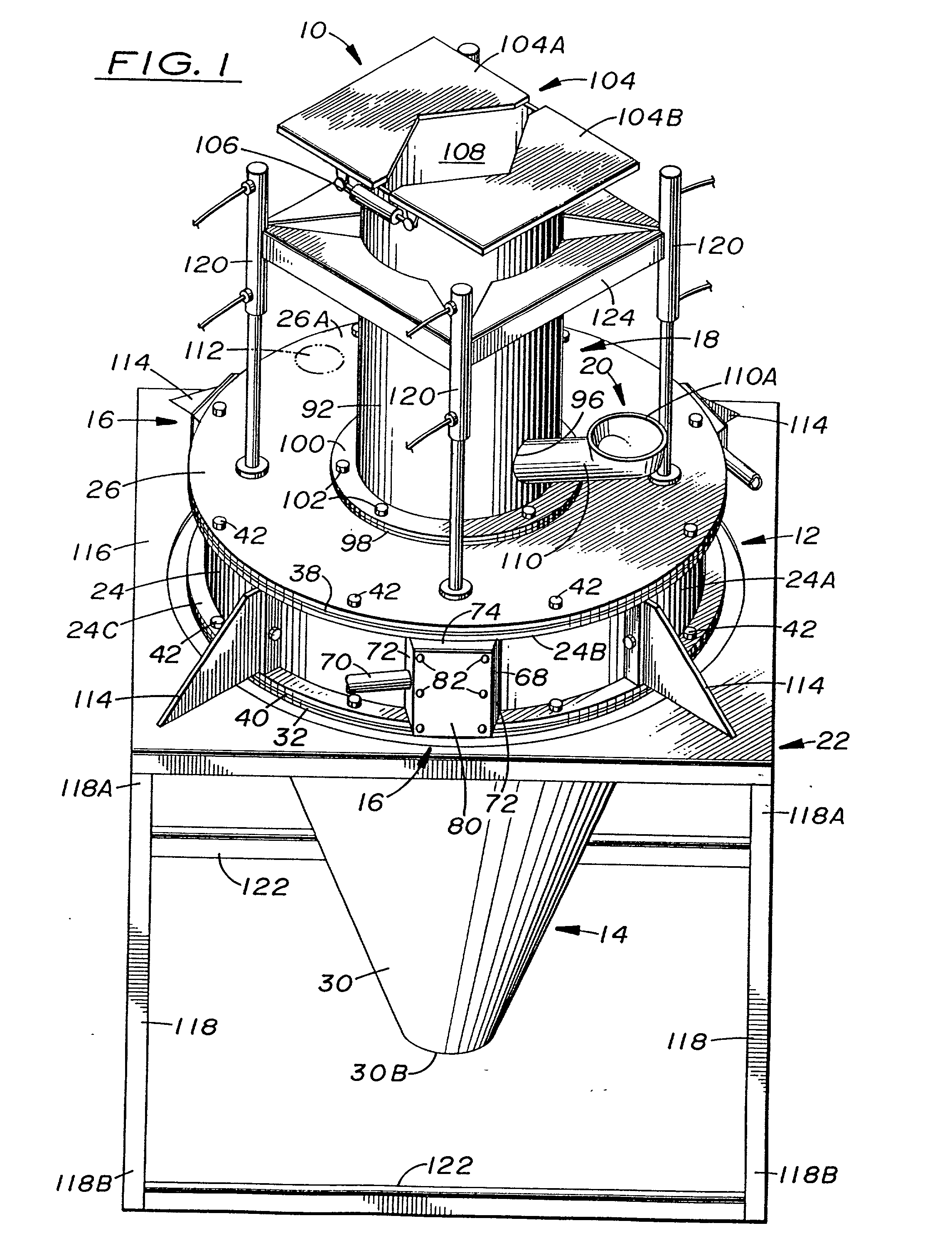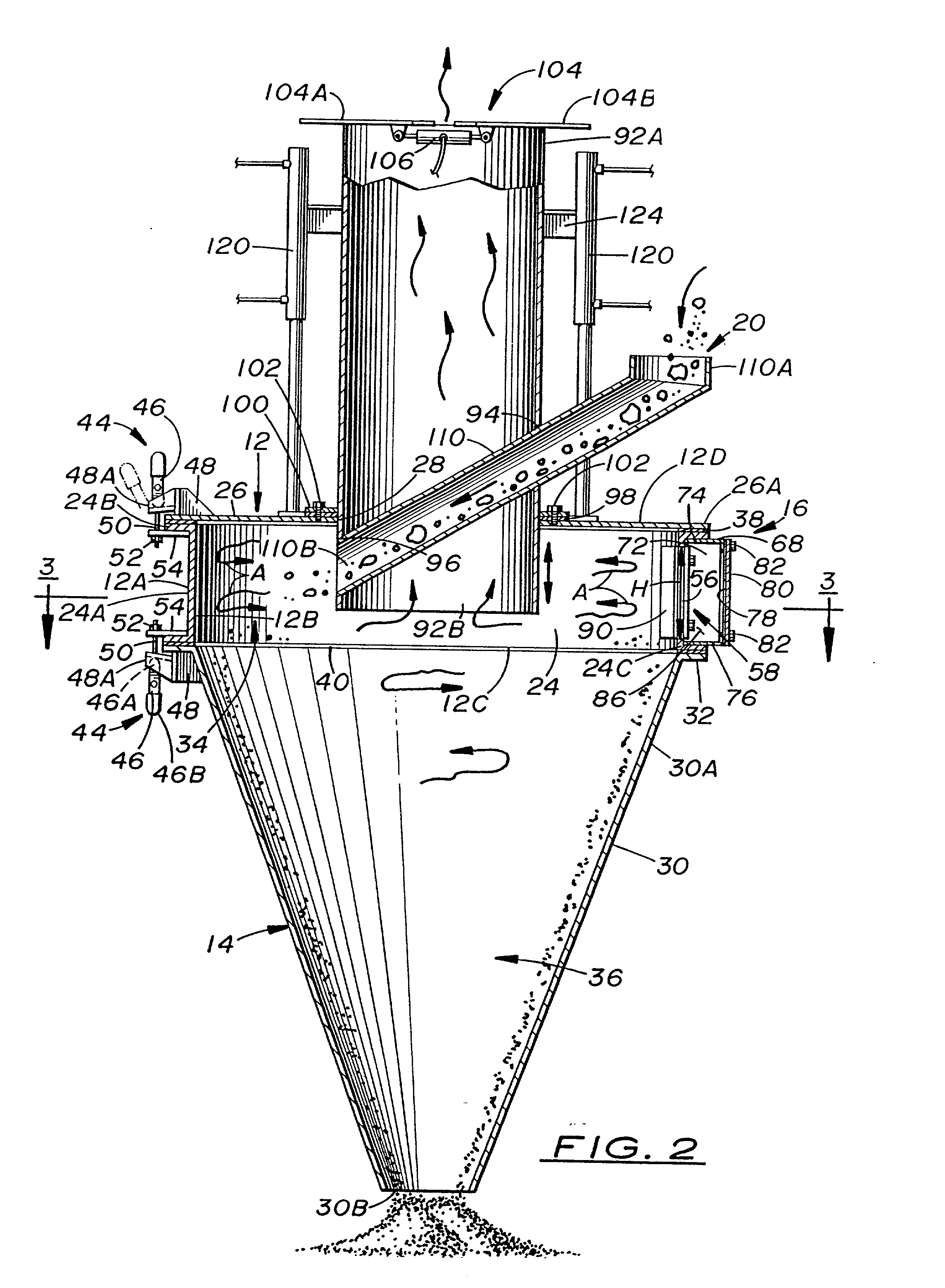Apparatus and method for circular vortex air flow material grinding
a technology of vortex flow and apparatus, which is applied in the direction of gas current separation, solid separation, grain milling, etc., can solve the problem that landfills often have limited space, and achieve the effect of simplifying the construction of the uni
- Summary
- Abstract
- Description
- Claims
- Application Information
AI Technical Summary
Benefits of technology
Problems solved by technology
Method used
Image
Examples
Embodiment Construction
[0056] A four foot diameter grinding apparatus 10 was assembled as detailed above. The specifications for various parts used therein are set forth below:
[0057] The adjustable damper 104 is 22" square plate with a 0.24" thickness. The preferred setting is fully open when the exhaust pipe 92 is in its preferred setting (see next paragraph).
[0058] The adjustable exhaust pipe 92 is 20" OD (outside diameter) and 48" long. Accordingly, the opening 28 in the top cover 26 of the upper grinding chamber 12 is 20 inches in diameter. The adjustable exhaust pipe 92 can be moved vertically by loosening legs 120 and sliding the exhaust pipe through the annular seal 98 to the desired level. The annular seal 98 is then secured into place by a 3" wide flange 100 with and ID (inside diameter) of 20" and an OD of 26". The preferred setting is to lower the exhaust pipe 92 to a depth parallel to the seam joining the grinding chamber 12 to the lower enclosure 14.
[0059] The hopper feed tube 110 is 5" OD tu...
PUM
 Login to View More
Login to View More Abstract
Description
Claims
Application Information
 Login to View More
Login to View More - R&D
- Intellectual Property
- Life Sciences
- Materials
- Tech Scout
- Unparalleled Data Quality
- Higher Quality Content
- 60% Fewer Hallucinations
Browse by: Latest US Patents, China's latest patents, Technical Efficacy Thesaurus, Application Domain, Technology Topic, Popular Technical Reports.
© 2025 PatSnap. All rights reserved.Legal|Privacy policy|Modern Slavery Act Transparency Statement|Sitemap|About US| Contact US: help@patsnap.com



